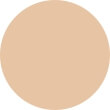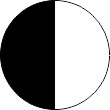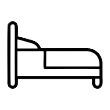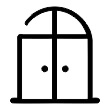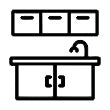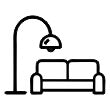Overlap and How it works
Proper overlapping techniques make a flawless and seamless wallpaper installation possible. To ensure the quality of our wallpapers, all our murals and wallpapers are produced with an overlap.
Understanding how to overlap wallpaper panels is crucial for achieving a professional and visually appealing result.
This guide will explore the importance of overlapping, step-by-step instructions, and helpful tips to ensure a smooth and seamless wallpaper installation that enhances your space.
Understanding The Concept Of Wallpaper Overlapping
Overlap refers to laying one strip of wallpaper over the previous strip to ensure a seamless and smooth finish. This step is crucial in creating a seamless look for your walls and hiding any seams between the wallpaper strips.
The main purpose of overlapping wallpaper strips is to ensure a seamless and uniform look for your walls. When wallpaper strips are properly overlapped, the seams between each strip are hidden, creating a continuous and smooth surface. Additionally, overlapping helps prevent the wallpaper from separating or peeling away from the wall in the future.
Important To Know
- The "Overlap" marking on the top of each panel indicates the need for overlapping the edges by 0.5 inches for each panel. The next panel must be placed 0.5 inches over the previous one.
- It's important to know that Peel and Stick wallpapers can shrink a little bit over time. That's why removing the Overlap in any Peel and Stick wallpaper is not recommended. If you remove it, the wall might start showing through the seam as time passes.
- Sometimes, you can remove the extra part of the wallpaper that overlaps in certain situations. But if you do that, you might see visible lines where the wallpaper meets. Removing the Overlap's not a good idea because it can make the wallpaper look imperfect. You need to think carefully about the possible problems and decide if removing the Overlap is right for your installation.
Method To Properly Overlap Wallpaper Strips
Here is a step-by-step guide on how to properly overlap wallpaper strips:
STEP: 1
Creating A Guide For Your First Panel:
- Measure the width of your wallpaper panel. Starting from the left side of the wall, measure out the width of the wallpaper panel. Once measured, make a mark at the designated point with a pencil or marker.
- Using a marker, draw a straight vertical line from the ceiling to the floor. This line will serve as a guide for your first panel of wallpaper. It's important not to align the wallpaper directly with a corner or the ceiling because they may not be completely even or straight.
STEP: 2
Starting To Hang The First Panel:
- Before you start installing the wallpaper, check that the pattern is facing the right way up.
- Begin with the first wallpaper panel and peel off about 6 inches of the backing paper.
- Fold this peeled section back, exposing the sticky glue side. This will allow you to start applying and sticking the wallpaper in place.
- Apply the wallpaper panel to the top of the wall, overlapping the ceiling slightly.
- Verify if the wallpaper is straight by aligning the right side with the guideline established earlier.
- If the wallpaper appears uneven or misaligned, gently lift it and repeat this step until it is straight.
- When peeling off the backing paper, do it gradually and only expose up to 10 inches of the adhesive side at a time.
- As you peel, check that the wallpaper's right side is aligned with the Guide Line you drew earlier.
- When pulling down the backing paper, always do it in a straight motion and avoid pulling at an angle, as this could stretch the material.
- After peeling off a small portion of the backing paper, employ the squeegee tool to firmly press the wallpaper onto the wall. Start from the centre and gradually work your way outwards, smoothing out any bubbles along the way.
- Utilizing the squeegee tool during this process is essential as it ensures proper adhesion of the wallpaper to the wall. Skipping this step may result in the wallpaper detaching shortly after installation.
STEP: 3
Overlapping Each Following Panel:

- Take the second panel.
- Determine the appropriate Overlap, around 0.5" (1-2 cm), to smoothly install it along the edge of the first panel.
- Start at the top and properly align the paper along the top edge of the wall.
- Repetition of the first panel's processes is required, working in 4-6" intervals down the wall while continuously ensuring that the pattern is aligned before using the squeegee.
- To adjust the position, gently remove the paper parallel to the wall with even pressure to avoid stretching.
- Finish the entire installation by placing the remaining panels.
How To Remove The Overlap?
STEP 1:
Identify the center of the Overlap and use a sharp knife to make a precise cut through both layers of wallpaper from top to bottom. Then, remove the remnant on the left side.
STEP 2:
Gently lift the edge of the right panel to reveal the remaining Overlap and remove the excess piece on the right side.
STEP 3:
With half of the Overlap removed from each side, carefully position the lifted edge and secure it into place. The installation is now complete!
Why Is Removing Overlap Not Recommended?
The decision to remove the Overlap in wallpaper installation depends on several factors, including the type of wallpaper used and the surface to which it is applied. In some cases, removing the Overlap can result in issues with the appearance or stability of the wallpaper over time.
For example, removing the Overlap on a peel and stick wallpaper can cause the wall to become visible through the seam of the wallpaper over time, as the peel and stick wallpaper shrinks over time. On the other hand, keeping the Overlap intact when installing on a textured wall helps ensure the stability and overall appearance of the installation.
Before starting the installation process, it is important to carefully evaluate the advantages and possible disadvantages of removing the Overlap.
Frequently Asked Questions
Q: What Is Overlap In Wallpaper Installation?
Ans: Overlap refers to the process of laying one strip of wallpaper slightly over the previous strip to ensure a seamless and smooth finish. This step is crucial in creating a polished look for your walls and hiding any seams between the wallpaper strips.
Q: Why Is Overlap Important In Wallpaper Installation?
Ans: Overlap helps create a seamless and uniform look for your walls by hiding the seams between each strip. It also helps prevent the wallpaper from separating or peeling away from the wall in the future.
Q: How Do I Overlap Wallpaper Strips Correctly?
Ans: To overlap wallpaper correctly, you must first align the edge of the new strip with the previous strip and then slightly overlap it to cover the seam. Make sure the pattern on each strip is aligned correctly, and use a wallpaper smoother or plastic smoother to press down the Overlap and smooth out any air bubbles or wrinkles.
Q: What Happens If I Don't Overlap The Wallpaper Correctly?
Ans: If wallpaper is not overlapped correctly, the seams between each strip will be visible, and the final look of the wall will be unprofessional and uneven. The wallpaper may also separate or peel away from the wall in the future.
Q: Can I Overlap Wallpaper, Or Do I Need To Hire A Professional?
Ans: While overlapping wallpaper can be challenging, doing it yourself with the right tools and techniques is possible. However, if you need more confidence in your abilities or want a guaranteed professional finish, consider hiring a professional wallpaper installer.
